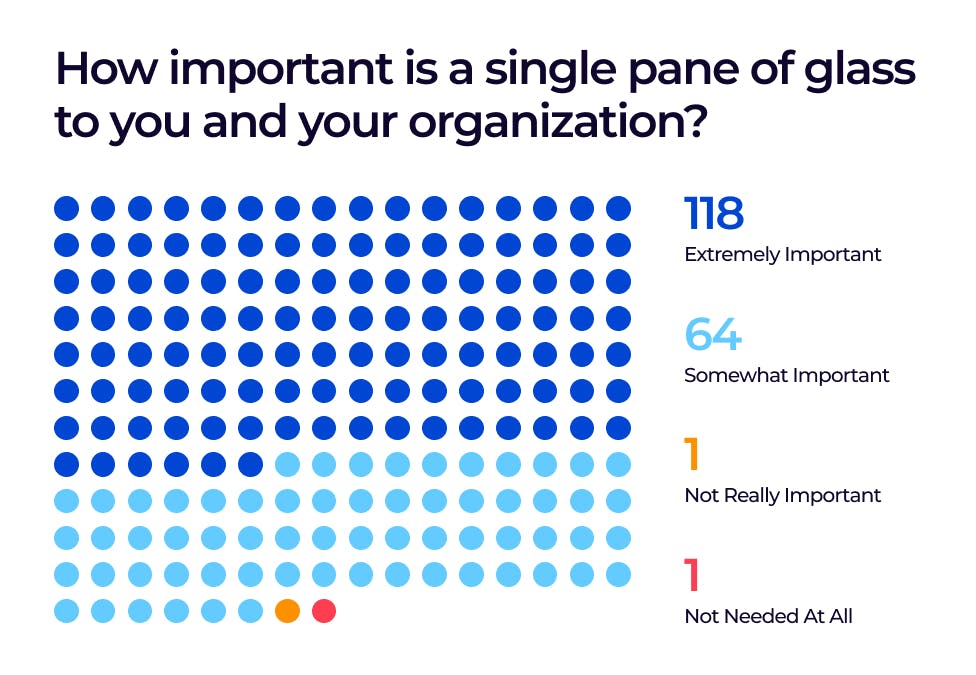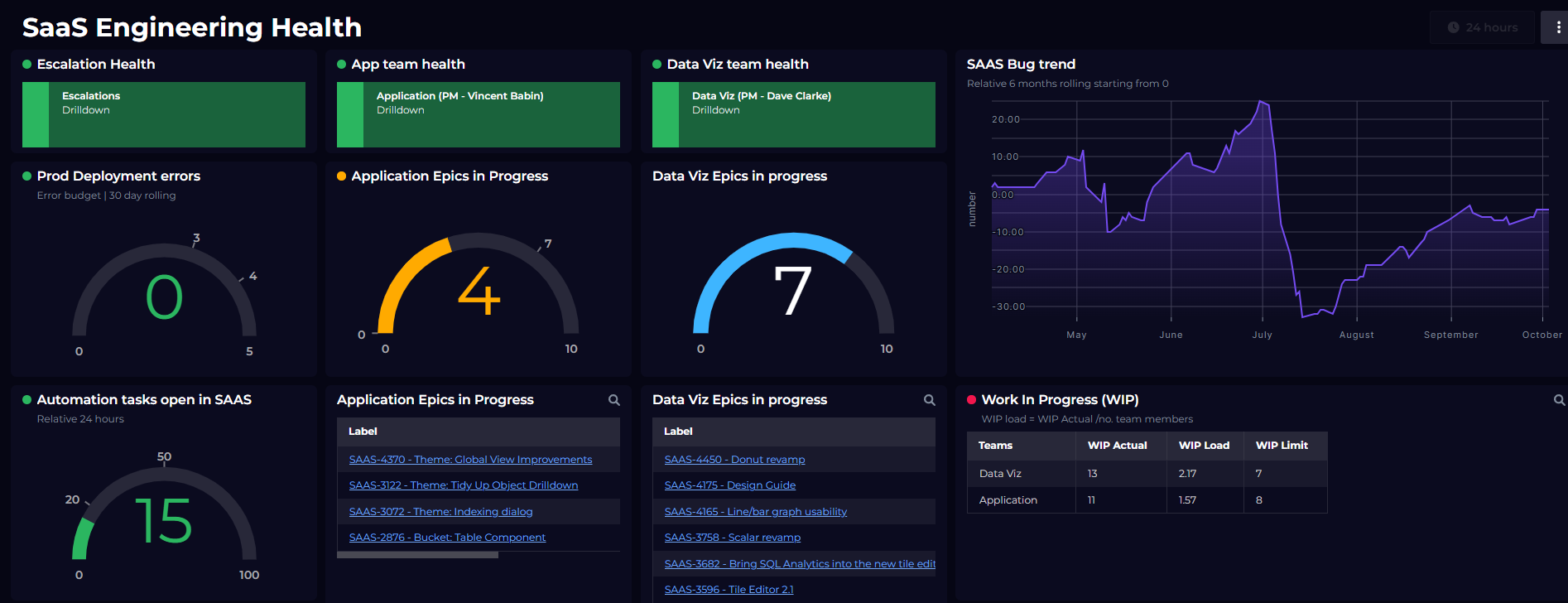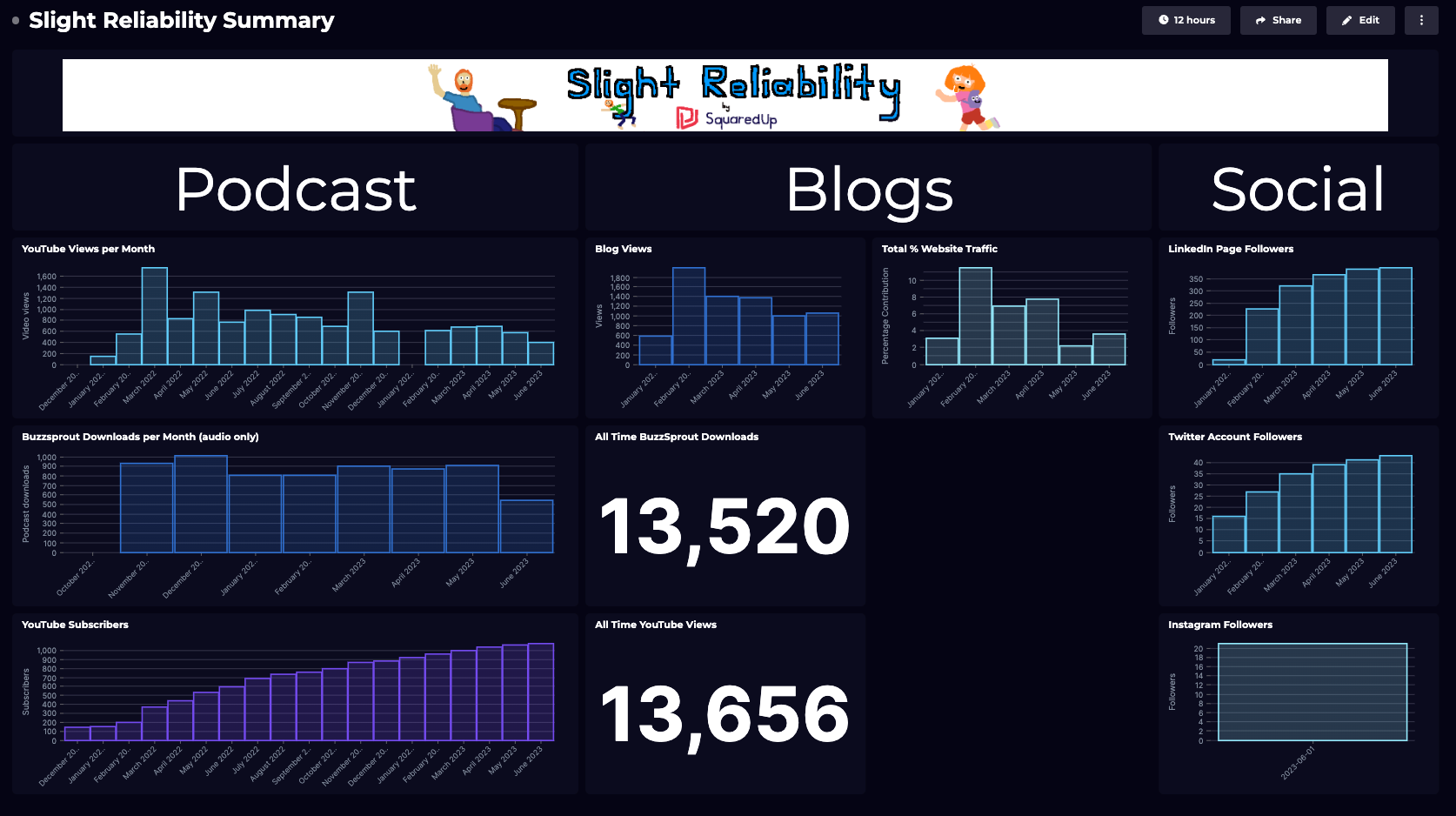What is a single pane of glass?
Definitions, key components, and pain points
Editor’s Note: This is part 1 of a 2-part series exploring the results of our recent survey on the concept of a single pane of glass. After you've read part 1, check out the 2nd part of our analysis here.
Introduction and Survey Overview
If you’ve worked in IT or infrastructure monitoring over the past few decades, then at some point or another, you’ve likely come across a concept that seems at once mythical while also fundamental to building a successful monitoring strategy—a single pane of glass.
After 10+ years working with some of the best infrastructure monitoring teams in the world, we decided to revisit the single pane of glass concept.
What resulted was a survey (conducted in 2021) of more than 180 professionals in the infrastructure monitoring space. And while we learned a lot about the perspectives of this industry, we noticed something else.
Specifically, a lot of their insights suggest that a successful implementation of a single pane of glass would have implications beyond ITOps and infrastructure monitoring.
Through the following survey analysis, we’ll address a few core themes and attempt to connect them to a larger truth about the need for more visibility in the modern enterprise—especially in the era of microservices, multi-cloud, and serverless. We'll also use this analysis to revisit that old urban legend that’s been eluding the industry for decades: a functioning single pane of glass.
Here’s what we’ll cover over the course of two blog posts:
Part 1 (this post):
- Prevailing definitions and the need for a single pane of glass
- The high-level pain points monitoring and observability teams face
- Practical benefits a single pane of glass could provide
- Why it's so difficult to achieve
What is a single pane of glass—and is it needed?
Before we got too far ahead of ourselves, we needed to ask a couple of fundamental questions: what is a single pane of glass, and is it something organizations need?
Perhaps unsurprisingly, given how long the concept has existed, there was a high degree of consensus about what a single pane of glass is, definitionally.
From these definitions, we were able to extract a couple of key components that the ever-elusive single pane of glass should have:
- A single view / big-picture view of a system’s components
- Aggregation and connection of data across a range of infrastructure and application data sources and tools
- Visualizations of system and application status at-a-glance
But perhaps more surprising was the overwhelming consensus regarding the need for one.

This high degree of ongoing need for a single pane of glass, combined with the definitional consensus, signaled that these attributes represent existing pain points felt in day-to-day work.
Pane Points (Pun Intended)
Unified, Big-Picture View
One of the most consistent responses centered on the need for a unified, big-picture view of distributed services and tooling.
This might seem self-evident, given the long-standing conception of a single pane of glass, but the overwhelming consensus made this pain point resonate.
Some responses included terms like “traffic light view”, “10,000-foot view”, and (our personal favorite) “one ring to rule them all”.
A single solution where we can monitor all of our systems in one place, without the need to move between solutions to monitor different platforms.
On defining what single pane of glass is
Regardless of the analogy chosen, the implication of this takeaway is clear, both for traditional infrastructure and modern, cloud-native architectures. As things get more complex—and the sheer amount of data increases—there’s a distinct need for a unified view that serves as a robust point of entry to monitor and observe infrastructure and application data.
Aggregating and Connecting Data
Implicit in the need for a unified, big-picture view is that organizations are generating ever-increasing amounts of data from a growing collection of sources and tools—from infrastructure availability and reliability, to error and event logs, to a range of other application-based telemetry.
This problem is typically referred to as “tool sprawl”, "data sprawl", or even “dashboard sprawl”. But essentially, we can think of it as a manifestation of the way modern infrastructure and applications are developed and maintained—highly-distributed, microservice-based, in multi-cloud environments, etc.
What’s needed, then, are more effective means of aggregating and connecting growing amounts of data from multi-variate sources—aggregation and connection that enables teams and organizations to act on the data they’re generating.
All tools linked from a single dashboard so that users without access to specific tools can still see the basics...with links for experts to drill down into the best sources of data.
On a key feature that a single pane of glass should have
Conversely, if data lives only in the tool or source where it’s generated, it quickly becomes difficult to locate the source of a given issue. This is especially true given that individual components within modern distributed systems are often highly complex and interdependent.
What this leaves us with is a need to be able to stitch data together across tools and services and surface them in one place. In other words, a single point of visibility and entry into different components within a system.
However, this need also introduces a significant set of challenges. Specifically, we saw responses rightly cautioning against wholesale data collection and ingestion. Unless the aggregation of that data is coherent and actionable, most of the data will go unused, and costs (both time and money) can spiral.
Visualizing Application and System Status
Connecting disparate data sources in a unified view would be a great start—but survey respondents also noted that this alone isn’t enough.
Specifically, teams need to be able to use this connected data to visualize the health and status of their infrastructure and applications from end to end.
As such, an effective single pane of glass should provide a mechanism for rolling up different data sources into more comprehensive, high-level views of system status.
To me it means one central place where you can go and log in to get visibility of the health of all systems that are being monitored by multiple applications.
On defining what a single pane of glass should be
This also echoes one of the takeaways we addressed above when discussing the need to aggregate and connect data—an effective visualization of application and system status would inevitably need to understand how different components of a system connect to and affect one another.
This kind of dependency mapping is crucial when trying to paint an accurate picture of overall status.
What's Next?
That brings us to the conclusion of part one of our single pane of glass survey analysis. Through an examination of the what and why of a single pane of glass, we leave with a couple of clear takeaways:
- There is a distinct need for a single pane of glass, and a high degree of consensus on its required elements
- The pain points felt by modern IT teams extend beyond traditional infrastructure monitoring and into application development and broader observability.
In part 2 of our analysis, we’ll use the pain points we’ve outlined here to dig deeper into the practical benefits survey respondents suggested a single pane of glass could provide to their teams and organizations.








